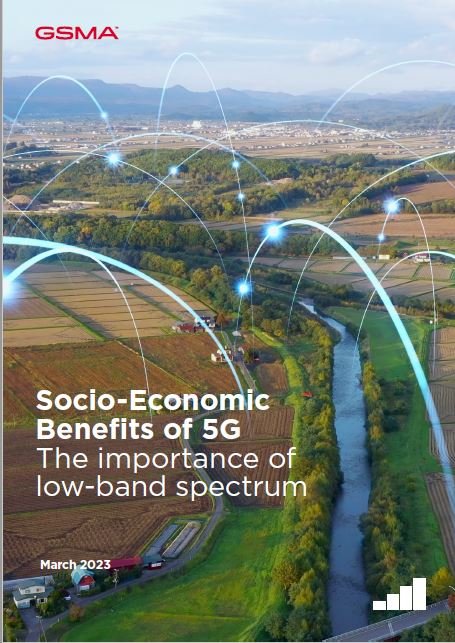Low-band spectrum is a driver of digital equality, reducing the gap between urban and rural areas and delivering affordable connectivity. Without sufficient low-band spectrum, the digital divide is likely to widen, and those living in rural areas will be excluded from the latest digital technologies.
This report shows, for the first time, the specific economic impact of 5G using a low-band spectrum. The report also provides the distribution of 5G low-band benefits by use case and by region and uncovers the industries that will benefit the most.
Low-band spectrum is a driver of digital equality, reducing the gap between urban and rural areas and delivering affordable connectivity. Without sufficient low-band spectrum, the digital divide is likely to widen, and those living in rural areas will be excluded from the latest digital technologies. At the end of 2022, there were already 252 commercial 5G networks in 86 countries around the world, serving more than 1 billion 5G connections. By 2030, more than 5 billion 5G connections are forecast worldwide, driving almost $1 trillion in GDP growth. While 5G is forecast to reach maturity by 2030 in North America, Europe, China, and the GCC countries, it will continue to grow in many low- and middle-income countries (LMICs) well into the 2030s.
Low bands play an important role in achieving the social goals of widespread connectivity by serving two key requirements:
- Their superior propagation characteristics make them particularly suitable for providing coverage in rural and remote areas, which is important in low and middle-income countries that have large rural populations.
- They have superior in-building penetration, providing ‘deep’ indoor coverage as well as capacity in urban areas.
In most countries, the main low bands currently used for 5G are in the 600 MHz and 700 MHz frequencies, while 800 and 900 MHz are used for previous generations. At the end of 2022, operators in almost half the countries where 5G had been launched were utilizing the 600 or 700 MHz bands for 5G. Those countries have achieved significantly higher levels of coverage, as well as better 5G availability and indoor quality of service than those not using 600/700 MHz.
Low-band 5G is expected to drive around $130 billion in economic value in 2030. Half of the impact will come from massive IoT (mIoT). Many existing and future IoT use cases require wide area coverage, in addition to population coverage, which low-band spectrum is best suited to provide. MIoT applications are set to play an important role in digital transformation across a range of economic sectors, including manufacturing, transport, smart cities and agriculture. The rest of the economic impact will be driven by enhanced mobile broadband (eMBB) and fixed wireless access (FWA), as low bands will play a critical role in delivering high-speed broadband connectivity in areas underserved by fixed networks.
The model is built on two segments: first, it models the impact of 5G-based technologies on productivity and economic growth. Second, it distributes the benefits across sectors based on a number of elements, including the sector’s readiness for technology and the expected impact of 5G technologies on the sector. Together, the two segments allow the model to forecast the impact on each sector of the economy.
Download the full report:
https://data.gsmaintelligence.com/api-web/v2/research-file-download?id=74384112&file=220323-Socio-Economic-Benefits-of-Low-Band-5G.pdf



.jpg)


